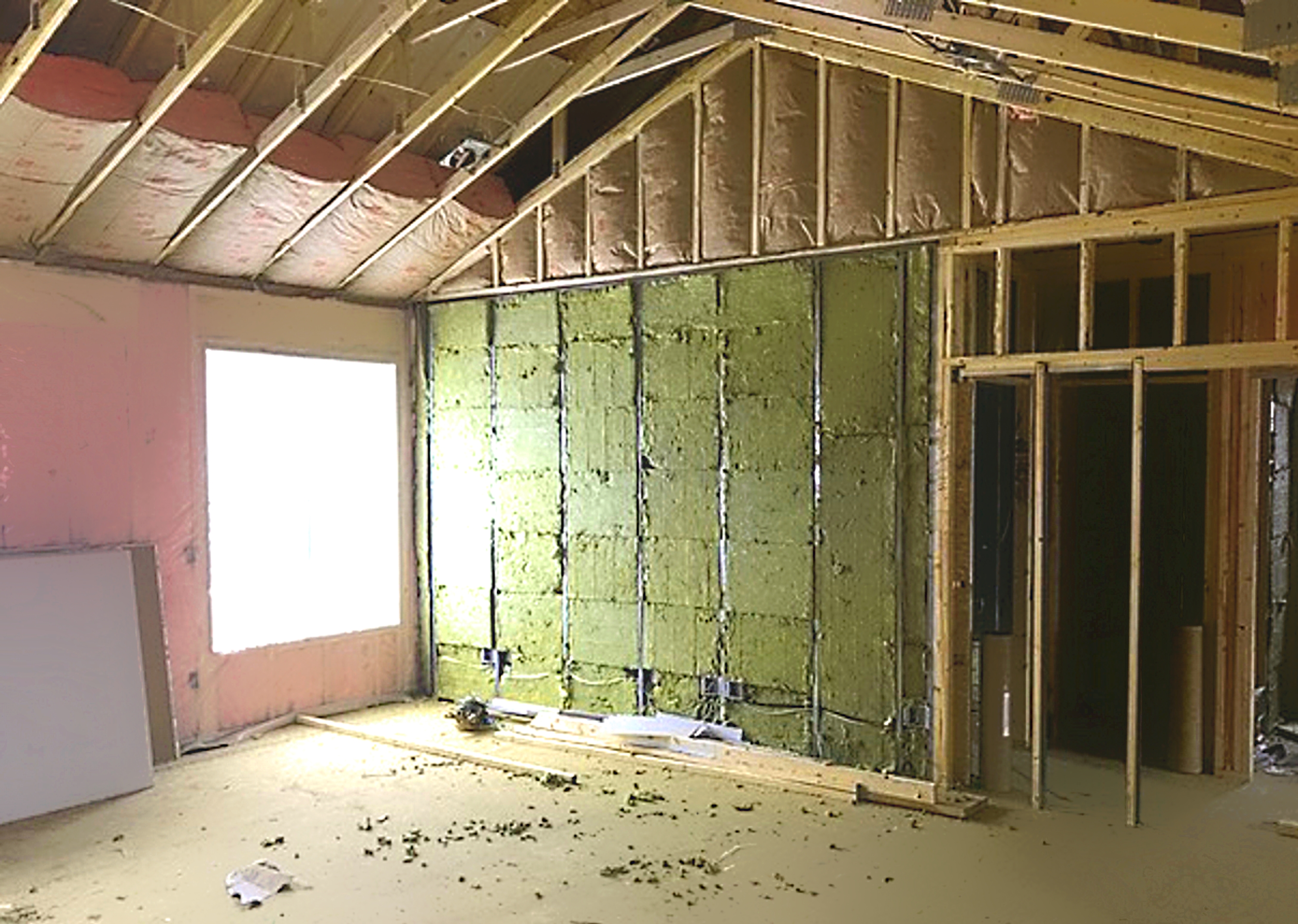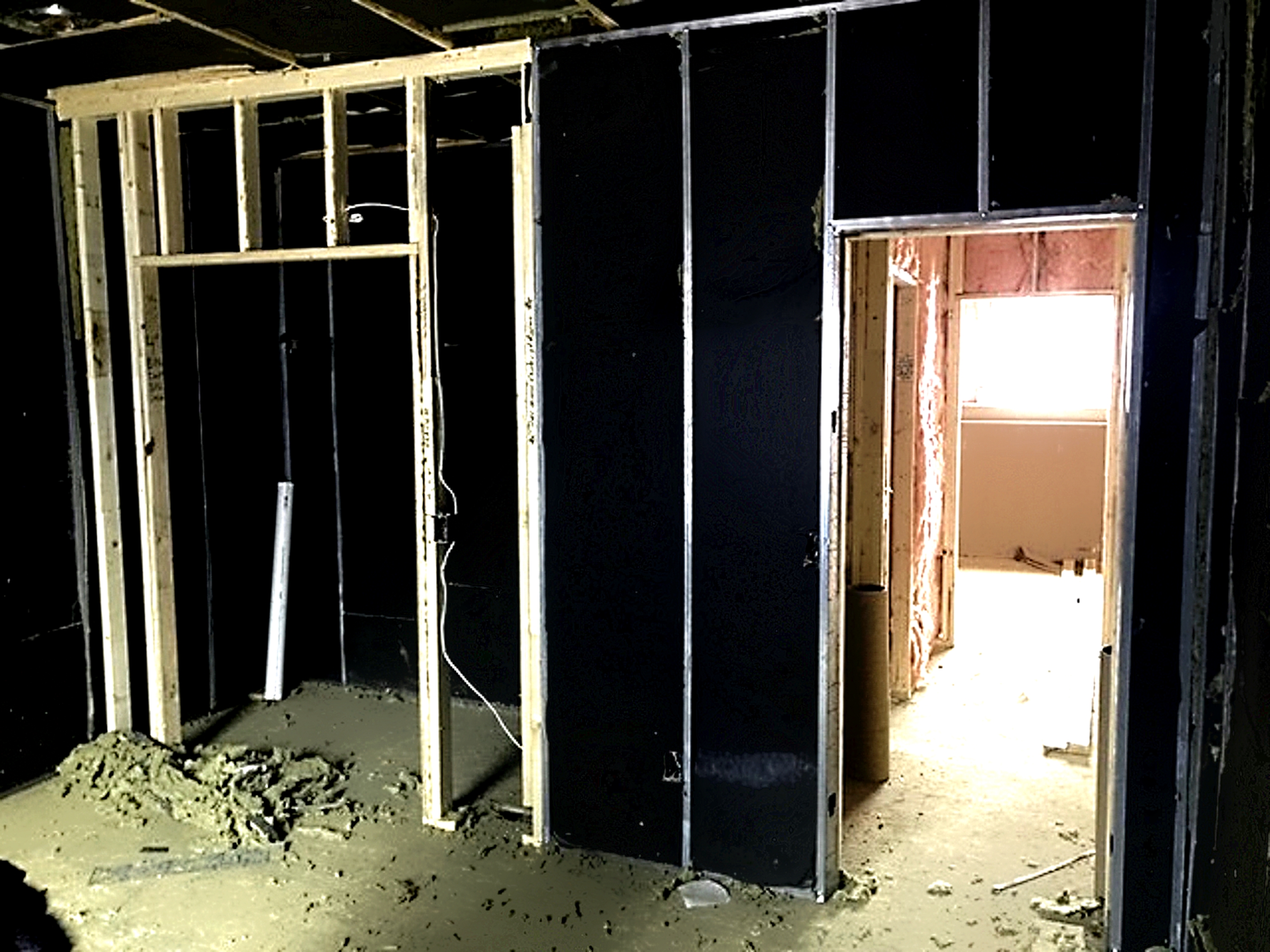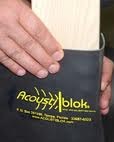Acoustiblok® Delivers Peace of Mind to Family with Autistic Child
FINDLAY, Ohio (PRWEB) April 04, 2018 -- Acoustiblok, a NASA “Spinoff” listed Company, donated its award-winning Block 16 sound isolation system to a family with an autistic child to help provide the extreme level of noise reduction needed in the construction of a “Sensory Room”. Since the Sensory Room’s completion, Craig Holbrook, the father said, “Our daughter not only loves the activities in her room, but her meltdowns have decreased in frequency, length, and severity. She can focus more when we engage with her, and the entire household has benefited from her having a professionally engineered soundproof Sensory Room.”
The Holbrooks had been thinking about building a custom-made Sensory Room in their home since they toured one at the school their daughter was attending. The moment they knew they had to move on it was when they saw how much fun Cailyn, their autistic daughter, had and how much more active she was when they took her to a Sensory Room at a special needs school in town. She loved the colored lights, swing, and bubble machine. These were things they wanted to incorporate in to their own Sensory Room. The sound reduction component was something they wanted to incorporate due to observations they made about their daughter; her desire to wear headphones and cover her ears, her meltdowns triggered even by children playing and her desire to run away from sounds.
A truly soundproof Sensory Room turned out to be the perfect solution for the family. Common loud noises in the neighborhood such as lawnmowers, leaf blowers, traffic, car horns, neighbor’s parties, kids playing, TVs and stereos could set Cailyn off and even her younger brother would rarely have friends over because of the concern of too much noise.
Sensory Rooms have been shown to be particularly beneficial to autistic children. A current study concluded that children in the sensory integration group scored significantly higher on attaining their goals. In addition, standardized tests showed that the children receiving sensory integration therapy required less assistance from their parents in self-care and social situations. It is speculated that by changing how sensations are processed by the brain; that autistic children are better able to make sense of the information they receive and improve its usage when participating in everyday tasks. This both stimulating and calming environment has a relaxing effect on children who cannot be still while helping direct attention of children less energetic or unfocused.
What is Autism Spectrum Disorder?
The Centers for Disease Control and Prevention (CDC) estimates autism’s prevalence as 1 in 68 children in the United States.Autism Spectrum Disorder encompasses a range of conditions characterized by some degree of impaired social behavior and communication, a narrow range of interests and hypersensitivity to certain stimuli. Children with autism often experience ordinary stimuli as unpleasant, confusing and even painful.
“Sensory Defensiveness”
Recent studies show that up to 65% of autistic children are sensitive to noise. This noise sensitivity can increase anxiety levels, lead to panic attacks, self-harm, long-term health consequences and unnecessary ER visits. Hypersensitivity to sound (or any other sensation) is termed, “sensory defensiveness.” Treatment can help, but the condition is life long and cannot be cured. An estimated one third of people with autism remain nonverbal and about one third have an intellectual disability. Certain medical and mental health issues frequently accompany autism. These include: sleep disturbances, attention deficit and hyperactivity disorder (ADHD), anxiety and phobias, thus exasperating the symptoms. Many doctors and other healthcare professionals now recommend integrating sensory rooms in homes, clinics, hospitals, schools and even airports for those with autism and sensory processing disorder (SDP). Always on the forefront, Delta recently opened “Sensory Rooms” at numerous airports in both the US and the UK.
What is a Sensory Room?
First developed in the Netherlands in the 1970s, a Sensory Room is a place for decompression and tranquility, where specific skills can be engaged and enhanced in a playful/desirable non-threatening environment. It can often help isolate specific senses, reduce overload, and soothe an autistic child having a panic attack or feeling overwhelmed. Sensory rooms can also be used as safe-play-rooms for positive-reinforcement for autistic children.
Sensory room items usually include visual stimuli (mirrors, lights, colors), auditory stimuli (sound such as music), tactile objects (kinetic sand, balls with bumps, fuzzy/soft/silky), proprioception (awareness of body-anything that allows the person to be comforted/soothed via pressure such as bean bag chairs, weighted vests and/or blankets, squishy beds or sofas, therapy balls), and vestibular (swings, slides, balance boards, rocking horses, hammocks). Moreover, swinging has been found to have a strong effect on the brain’s ability to process and use sensory information. Motor skills can also be developed as well as the sense of smell (scented oils, scented candles). Taste stimulus can also be added under supervision (a variety of foods, liquids, gum, or textured food).
Who can benefit from a Sensory Room?
In addition to those with autism, Sensory Rooms have been found to help individuals with ADHD, dyspraxia, adults and children with sensory processing disorders, learning disabilities, and dementia. The equipment in the room can vary as with the needs of the person(s) using it.
The Sensory Room Construction
The sensory room project actually began when the family put their old house for sale on Memorial Day weekend of 2016 after a long weekend of partying went on at their next-door neighbor’s. They knew then they really needed to find a quiet neighborhood and build a special Sensory Room that would benefit the entire family.
After finding the right neighborhood, they began construction of their new home. Keeping sounds from entering the Sensory Room as well as stopping the noise from traveling outside the room was the goal. For the exterior part of the house, QuietFiber® (QF-4) ,with several advantages over fiberglass, was installed in the exterior framing members. A 2” air gap was left to allow for an unsupported layer of Acoustiblok (Blok 16) to hang in this air gap. Then the interior wall of the Sensory Room was erected, QuietFiber (QF-4) was again installed into the walls stud bays. Acoustiblok (Blok 16) was then installed on the face of the interior wall framing. To finish off the wall, two layers of 5/8” gypsum were installed. The ceiling construction required QuietFiber (QF-6) to be pressure fit in between the roof trusses, two layers of Acoustiblok (Blok 16) and two layers of Gypsum. (Acoustiblok does not contain any lead and is barium-free, and therefore considered medically safe. This can be important as many autistic children have PICA and eat paint chips.)
The floor of the room as well as the basement required QuietFiber and Acoustiblok applications and included, high cut pile carpet with heavy padding. The family ultimately made some budgetary concessions on the construction (hat channel and resilient isolation clips were eliminated), and a more economical door and window were installed. These increased the sound transmission to a degree, but it turned out to be minimal.
Craig said this about the construction, “We battled with the balance of wanting a soundproof room and it being for a child. We ultimately made some concessions on a door and including a window and reducing STC rating for size, but the Acoustiblok isolation system performance is amazing. At one point, my brother and I were installing the swing mount and I was in the attic, making sure we were hitting the studs just right. We were yelling at each other on each side of the wall and having trouble hearing each other. Ultimately, I called him on the phone.”
Shawn Saathoff, Executive Vice President of Acoustiblok and the Chief Consultant on the project advises anyone interested in building a sensory room to create a pre-construction design/plan with experienced experts in the acoustical field, and work with a builder who is willing to manage the details needed to gain the best performance out of the design. Sensory rooms are different in that you are trying to keep the sounds from outside the home from entering the room. This can pose big challenges with the ceiling and exterior walls.
Once the construction of the house was complete the Holbrook family had no regrets. Craig said, “Cailyn loves the room. She can control the light colors. She is often in the swing or playing with her sand. On bad days when she is stressed she prefers a small “isolation corner” in the closet (see photo) where she can remove herself from any stimulation and calm down. The window is one of her favorite places to sit. My family can be extremely loud and our living room is on the other side of Cailyn’s wall, but it doesn’t bother her at all now. My son is so happy! He can now have sleepovers. In our first month in the house, he had two friends spend the night.”
“I can honestly say, Acoustiblok was the easiest partner in the entire build process. They helped us keep our balance and worked with us on things that I know made their life harder (the window for example), but they did everything in Cailyn’s best interest and made major revisions when asked. I would highly recommend their products and services to anyone considering building a Sensory Room,” Craig concluded.
Lahnie Johnson, president and founder of Acoustiblok said, “Acoustiblok was happy to donate its noise control products and design plans to the Holbrook Family, and we are very pleased the whole family has benefited from their installation. We know our innovative sound isolation systems have helped many people who suffer from sound sensitivities. Almost everywhere you go today noise can be a problem; Acoustiblok and our isolation systems are a solution.”
For more information on conceptualizing a Sensory Room, please contact our specialist, Natalia Chudy, M.S. in mental health counseling and training in mental health disorders, at Acoustiblok.
Acoustiblok Products Vital to Sensory Room Construction:
Blok 16 – (sound isolation membrane system)
Acoustiblok material is best applied as part of layered wall, ceiling or floor construction. It is screwed to wood or metal studs prior to drywall. It has better sound damping qualities then standard construction materials. A typical 2 x 4 gypsum stud wall is anywhere from 34 to 39 STC depending on wood or metal framing. Acoustiblok installed in a stud wall assembly is lab certified at STC 53; better than 8 inches of poured concrete (STC 51). To the human ear this represents over 97% in sound reduction! With two layers of Acoustiblok in a hybrid stud wall, an STC 61 is possible. Acoustiblok is UL and ULC classified for use in over 400 wall and floor/ceiling assemblies.
Rather than attempting to block or absorb sound as other materials do, Acoustiblok (Blok 16) transforms sound energy into inaudible internal friction energy as the extremely dense & flexible material vibrates from the acoustical sound waves (virtually the same process and results as lead without the environmental problems or costs).
In multi-family units such as condominiums and apartment complexes, a leading cause of tenant relocation is noise. The problem of sound attenuation in these types of buildings is rarely addressed properly. By installing Acoustiblok isolation systems during pre-construction, sound transmissions and noise from neighbors can be dramatically reduced.
QuietFiber- (QF-4 & QF-6 Sound Absorption Slabs)
To increase the STC of standard wall, ceiling & floor assemblies, QuietFiber is installed in what typically would be a hollow stud or truss cavity. QuietFiber will out perform run of the mill, open batts insulation. It does this by reducing the cavity resonance. QuietFiber is manufactured at specific densities and thicknesses that target the lower mid-range and upper low frequencies that most gypsum partitions fall short on attenuating.
The other function of QuietFiber is to reduce reflective or reverb buildup in rooms or areas. By installing QuietFiber on some of the parallel surfaces, the tonality, intelligibility and clarity of sounds become greatly enhanced. QuietFiber is engineered specifically for maximum sound absorbency measuring an (NRC 1.00) and can be installed throughout a room or area directly to flat surfaces. Ceiling tiles can be replaced with custom, faced panels to fit a standard 2’x 2’ drop ceiling grid. QuietFiber is hydrophobic, doesn’t support mold or mildew growth, E-84 class A fire rated, 100% recyclable, environmentally-conscious, and entirely made in the USA. It is currently available in various sizes and densities for optimum performance, and is UL rated for floor, wall and ceiling applications.
About Acoustiblok – “Quieting the World”
The Acoustiblok Corporation, a NASA "Spinoff" listed company, has extensive experience engineering “SCIF (sensitive compartmented information facility) rooms” and “Sensory rooms,” and has received top awards in the British House of Commons as well as being featured throughout the world on National Geographic TV for its unique contributions towards reducing noise pollution.
Primary products include Acoustiblok®- Blok 16,(sound isolation barrier system), Acoustifence®- AF-6 (outdoor sound isolation fence), All Weather Sound Panels® -AWSPs (patented, industrial grade, noise absorbing/sound barrier panels), QuietFiber®- QF-2, QF-4, QF-6, (sound absorption slabs) Quiet-Cloud®- QC-2, (Industrial sound absorption panels), and Acoustiblok Wall-Cover®.-AWC, (post construction, surface mountable sound isolation barrier system). Acoustiblok products are used in industrial, commercial, residential and marine sectors worldwide. The company’s products are all designed, engineered and made in the United States.
With over 20 years of supplying solutions and backed with over 45 years of experience in audio, sound and acoustics, Acoustiblok has stood the test of time and continues to set new standards in the acoustical industry. Acoustiblok Inc. ships products to more than 50 countries through a network of stocking distributors in the United States, on five continents across the globe and throughout the Mid-East. http://www.acoustiblok.com/
Anne D. Knight, Acoustiblok, Inc., http://www.Acoustiblok.com, +1 813-980-1400 Ext: 210, [email protected]



Share this article